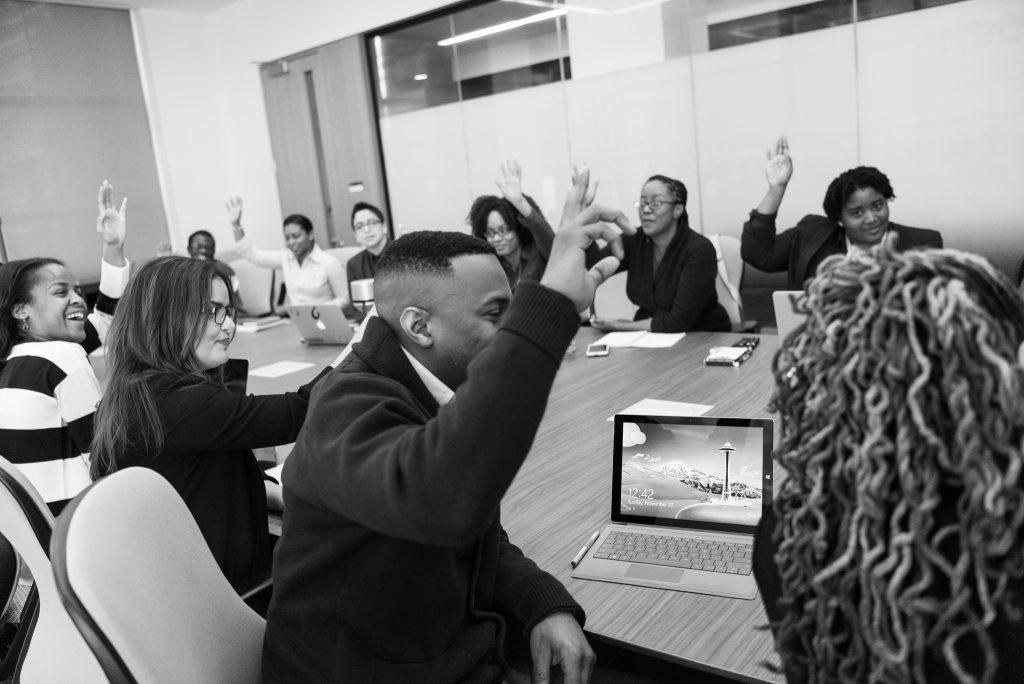Today we launch a brand new series of regular posts on the Trellis blog for scientific community managers interested in diversity, equity and inclusion. This installment was authored by Josh Knackert, UW-Madison Neuroscience Training Program. Additional series coordinators are Jennifer Davison, Urban@UW, University of Washington, Marsha Lucas, Society for Developmental Biology and Rosanna Volchok, The New York Academy of Sciences. You can find all of the posts in the series here.
Why does diversity, equity, and inclusion matter in communities?
“Welcoming and supporting a broad range of backgrounds, skills, perspectives, and approaches helps communities be most effective.”
Community can mean different things for different people – a collection of individuals with a shared purpose, small efforts driving a larger movement, or a support structure, to name a few. Key principles at the heart of all of these definitions are diversity, equity and inclusion. Welcoming and supporting a broad range of backgrounds, skills, perspectives, and approaches helps communities be most effective.

Image credit: https://www.flickr.com/photos/wocintechchat/25388901994/
Communities that strive to support and include members equitably and in the ways that individual members need most can more effectively solve complex problems, adapt to changing circumstances, innovate, and thrive. Communities, in turn, may offer their members advantages such as organization, motivation, knowledge, recognition, and shared accomplishments. When individuals feel welcomed, supported, and included, they can benefit from the community while also fostering the activities of the community and its influence.
Community managers as champions for diversity, inclusion, and equity
“…an inclusive community with a diverse membership and equitable community policies and norms doesn’t happen on its own; progress towards these goals must be intentional and actively maintained. “
With the particular concept of inclusion so intertwined in the fabric of community, community managers find themselves uniquely positioned to help maximize diversity and foster equity. However, establishing an inclusive community with a diverse membership and equitable community policies and norms doesn’t happen on its own; progress towards these goals must be intentional and actively maintained. Thankfully, community managers can leverage tools they already use and tailor their existing efforts to help move the needle. Additionally, many new tools and discussions are helping communities and community managers to support the goals of inclusion, diversity, and equity more effectively.
This post begins a series exploring how community managers, particularly those in STEM fields, may advance diversity, inclusion, and equity within their own communities and beyond. This series will feature discussions, tools, and resources for community managers, with a focus on integrating them efficiently and mindfully into existing community practices . The series is intended to foster dialogue about this topic, and collaboratively contribute to a knowledge base. Readers are encouraged to share their thoughts, recommendations, previous successes, lessons learned, and questions. Nothing offered in this series is meant to be universally applicable or one-size-fits-all. Diversity, equity, and inclusion are nuanced efforts that may have unique needs and considerations in each community so we welcome your specific examples. Note, stay tuned for our next post, where we go into more detail about the terms diversity, equity and inclusion
What can you expect from this series?
In the coming months, posts will discuss applying a diversity, equity, and inclusion lens to communication strategy, events, metrics, and community guidelines. Each post will include links and references to resources and research intended to help readers build a cursory foundation in these topics. As the series progresses, community managers might wish to pick and choose from the resources to create a toolkit for championing diversity, inclusion, and equity in their own community.
The authors for this series are alumni of the inaugural cohort of the AAAS Community Engagement Fellowship Program; each representing experiences and perspectives from various types of scientific communities.